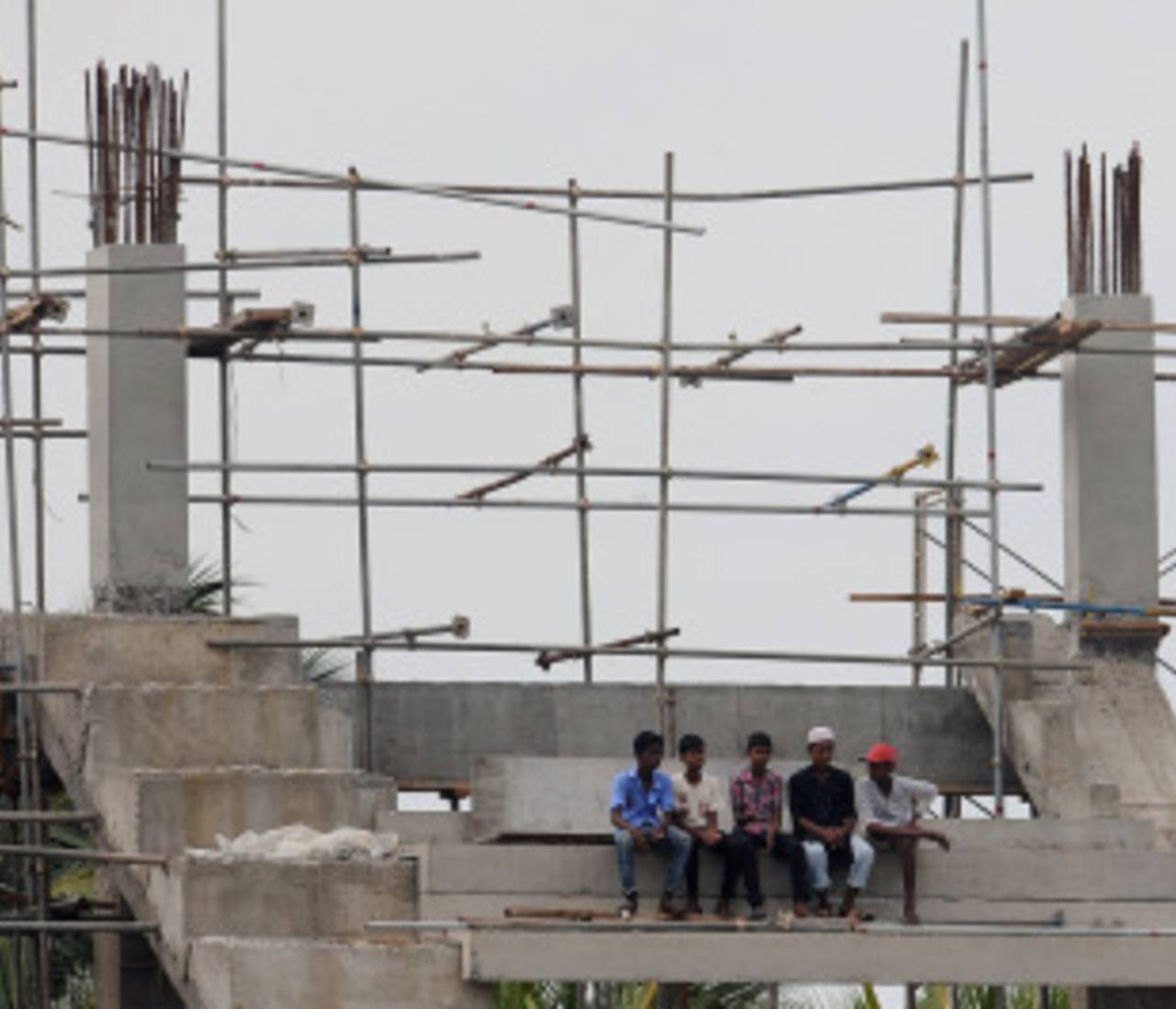Sri Lanka Cricket defends choosing Premadasa
Sri Lanka Cricket has said it chose to stage the second Test at the R Premadasa Stadium, despite its undergoing renovation, so that its players could get exposure to the ground before the World Cup
Andrew Fernando in Colombo
24-Nov-2010

Several of the stands in the Premadasa Stadium are still under renovation • AFP
Sri Lanka Cricket has defended its decision to stage the second Test at the R Premadasa Stadium, despite its undergoing extensive renovation, by saying its players would get maximum exposure to the ground ahead of the World Cup games that will be staged here next year. The match is being played in a shell of an arena, with the barest of facilities required for international cricket, despite Colombo having two other Test venues.
The thousand-odd spectators are crammed into a corner of the stadium, using temporary seating as the only permanent arrangements are in the players' pavilions. The press box has barely taken shape, with reporters and commentators cramped in a makeshift arrangement, and faced with technical difficulties.
The scene looks like something out of George Orwell's 1984 - cold, grey, bleak and unfriendly. The monstrous concrete constructions that enclose the playing area are crowded by giant iron rods that rise high above the cement slabs - not only creating an eyesore for spectators and television viewers alike, but also emphasising how unfinished the stadium remains just months from the World Cup.
None of the buildings are near completion; almost all are still missing a roof, and the structure to the south-east looks more like the remains of a devastated steel factory than a sports stand in the making. Test cricket is not always pretty - at times it is harsh, brutal and downright frightening - but rarely can it have been played in such a hostile setting.
The grotesque view from the media centre is made all the more stark in comparison to the arresting charm of Galle, the venue of the first Test, where the Indian Ocean cradled the ground and its magnificent backdrop, showcasing the allure of cricket on the island. Here, at the Premadasa in its present state, a gold-tipped spire of a nearby dagoba is the only reminder that this is still Sri Lanka and not some dystopian war-zone.
Neither the SSC ground nor the P. Saravanamuttu Oval, kilometers away, is being used for the World Cup and, as such, neither is undergoing renovation. One option for SLC could have been to allow construction at the Premadasa to continue unimpeded while at the same time staging the second Test at a more fitting venue.
Not so, said SLC secretary Nishantha Ranatunga. "The reasons for hosting a match [at the Premadasa] are purely cricketing ones," he told ESPNcricinfo. "It is our duty to ensure that our cricketers have the maximum amount of exposure at World Cup venues so that home advantage will be fully realised in the tournament."
The last match of any sort to be played at the Premadasa was the final of the Tri-series between New Zealand, India and Sri Lanka in September last year. Since then, the stands have all been torn down but, perhaps more pertinent to SLC's decision to schedule a Test match here, the entire playing area has been ripped out and relaid. The ground itself has been raised about three feet and reshaped to ensure better drainage and the pitch - often criticised and long ignored for Tests because of its flat, lifeless nature - has been freshly surfaced.
Neither captain knew what to expect from the new pitch before the match and playing an entire Test on it won't hurt Sri Lanka's World Cup prospects. Half of their group matches scheduled to be played here, in addition to the possibility of more appearances at the venue during the knock-out stages.
Sri Lanka do, however play three ODIs and a Twenty20 at this venue in three weeks, and they also play West Indies in a World Cup warm up match on February 16. So there would have been opportunity to get used to the pitch - and not during a Test match.
Andrew Fernando writes for The Pigeon and blogs here